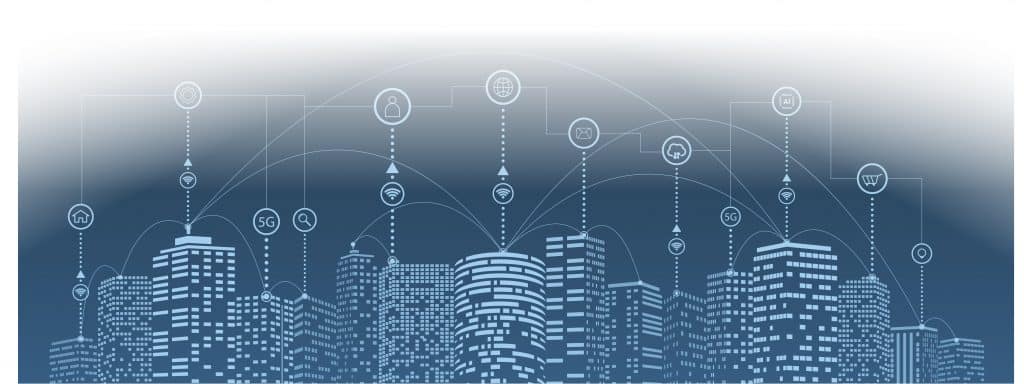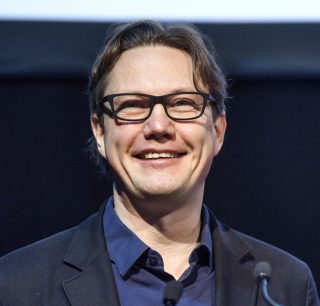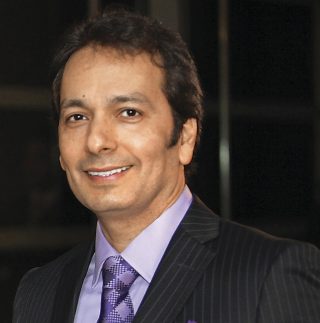Building the smart cities of the future

As the world struggles to come to terms with the changing reality brought on by urbanization, climate change and a global economic restructuring, the smart city concept continues to gain traction. But what is a smart city and what implications does it hold for construction in the future?
The United Nations estimates that by 2030, 60 percent of the world’s population will settle in urban areas, with one in every three people making their home in cities with at least half a million inhabitants.
Matti Mikkola, CEO of Malaysia-based Eastern Pretech has lived in Asia for the past 25 years. He has seen firsthand the changes that urbanization brings to the built environment. “In developing countries where we see the effects of urbanization quite clearly, we’re seeing a rise in the popularity of precast technology. Hundreds of new precast factories are being built yearly in China, for example. When vast numbers of people move into cities, you need to be able to provide housing on a large scale quickly. Using precast concrete for these types of construction is the obvious choice because it takes less time to build compared to casting in situ.”
The surging movement of people towards urban areas leads to challenges that go beyond housing. The growing need to provide services for millions of people has led to the growing popularity of the smart city concept.
Defining a smart city
“Cities account for 80 percent of the global GDP. This means that there’s a lot of market opportunities that come with urbanization. The downside is, dense human settlements come with their share of challenges – CO2 emissions, pollution and congestion,” Dr Martin Brynskov, chair of the Open and Agile Smart Cities (OASC) network and Associate Professor at Aarhus University in Denmark, points out.
“Within the smart cities movement, we are defining the building blocks of a future society where the physical is complemented by digital infrastructures. There is a global consensus that the term ‘smart cities’ is incomplete in a way. It is about ‘smart cities and communities.’ We have to start from the community level if we want to understand how digital transformation is unfolding.”
“The world is now converging on one definition of what a smart city is and it is quite promising: It is using physical, human and technical or digital systems optimally in the built environment to provide a prosperous, sustainable and inclusive future for its citizens,” Dr Brynskov explains.
“Concrete forms a large part of the built environment. It’s been infrastructuring the world for the last century or so. In a way, what we are looking for is the digital equivalent of concrete. We use concrete everywhere. You cannot build a society, not even a shanty town, without it. We need something as simple as concrete is in the physical world for digital systems. In our organization, we call these Minimal Interoperability Mechanisms (MIM) and our goal is to enable people with quite simple needs – especially in areas like Africa and Asia, where urbanization is not happening in a very structured fashion – to be able to take part in this urbanization.”
Sustainability an imperative
Miimu Airaksinen, CEO of the Finnish Association of Civil Engineers, emphasizes the need for sustainability. “A smart city is first of all, a sustainable city – ecologically, economically and socially. We have to remember that cities are made for people and ‘smart’ is kind of like the glue that connects services essential to managing the city.”
“The goal of smart cities is to make everyday life a bit easier for the people living in them but also to help cities run in an economically and environmental way. This means that we need to look for ways to ensure that we use resources efficiently and to make cities sustainable,” Airaksinen
Pratap Padode, Founder and Director of Smart Cities Council India, agrees. “We need to first draw the line where we can make sustainable living possible. Concrete, for example, is a long lasting building material, which is good for the durability of cities. It is an absolute necessity in creating a suitable environment where people live and work. In congested cities, it becomes even more useful to use concrete because it allows you to build to the heights you require, making more spaces available without sacrificing agricultural land. Concrete is the most modern material for providing a built environment as quickly as possible and with the least inconvenience.”
Padode notes concrete’s flexibility as an important determinant in the role it will play in smart cities of the future. “Structures require a lot of precision and the precision that comes out of digitalization can be very well executed in concrete structures because concrete can adopt any form that you please. I think precast, which is already used widely in developed countries, will become the norm rather than the exception. In developing countries, we are seeing a rise in the use of precast technology because of its ability to deliver projects in a short amount of time. The elements are standardized, brought to site and assembled. This is a huge plus especially in congested areas where people are moving about because it creates less of a nuisance for the city and its citizens.”
Mikkola also sees the benefits of using precast for building the sustainable smart cities of the future. “Using precast construction technology is more environmentally friendly than conventional construction methods because it generates less waste, and it is more productive and efficient. When a precast building is designed correctly, you can actually build a structure so it can be dismantled and moved to a new location. We have built, for example, a multistory car park using fully bolted connections. When it’s not needed in that location anymore, you unbolt the whole structure, move it to a new location and it can be used again, which lessens the need for new construction,” Mikkola says.
Integrating smart technology
IoT– and AI-enabled services will play a key role in smart cities and communities, making it imperative to find a way to easily integrate them into the built environment, emphasizes Dr Brynskov. “Under the EU-funded SynchroniCity project, we deployed 50 products and services in 21 cities. Using the SynchroniCity framework, which is based on the OASC MIMs, these pilots showed how local governments can effectively utilize sensors and data to provide services that positively impact their citizens’ wellbeing.”
Airaksinen points out that we can benefit from the existing built environment. “Given that much of the world has already been built in concrete, the key is to take the structures up to the standards needed now and in the future. We can look at the built environment around us as a sort of skeleton for smart technology. It would be a waste of material to destroy the skeleton, but we can bring it up-to-date. We can add printed sensors on concrete surfaces, for example, to give us early warnings about flooding or road conditions. New concrete structures can incorporate chemicals that can help the structure heal itself or give signals without the need for separate sensors. Concrete as a material is really becoming smarter and smarter all the time.”
Padode also acknowledges that certain issues come with integrating existing structures into the smart city template. “One of the challenges of building smart cities is that the old structures cannot be ripped out completely. We have to retrofit older structures, but there are also solutions available for that – concrete beams, for example, can be adapted quite systemically.”
Mikkola enumerates a number of advantages that precast elements already offer that make them the perfect building block for smart cities. “Hollow core, because you can run wires and other connections through them, make for a good building material for smart cities. Plus, it has the advantage of using up to 40 percent less concrete than other materials,” he says. “Concrete is also very flexible in terms of integrating the technology that’s needed in smart cities. When concrete is still wet, you can put carbon nanotubes that become part of the structure as the concrete dries. And as the technology becomes more advanced and the sensors become smaller, the easier it becomes to integrate with concrete.”
Food for thought
“In a way, there is nothing new in seeing the interplay between human systems, the physical systems and the technology systems and how they are integrated for the future. The problem is how do we balance the pros and cons of using particular technologies in creating the future for ourselves? How do we create systems without sacrificing proper personal data management and fair AI? If you put a lot of sensors in a building for structural or behavioral monitoring, you can actually tell what activities people are engaged in. That can be quite intimidating. But on the other hand, if there’s an incident or situation that’s life-threatening or can affect the structural integrity of a building, you’d want to know. We don’t want to live without modern technology, but I think we should be wary. We should find a path through all the dilemmas that new technologies pose to us.”

Dr Martin Brynskov is chair of the global Open & Agile Smart Cities initiative (OASC), which encompasses 150 cities in 29 countries.
“Smart cities is not just about technology or devices. They are important, but it’s even more important that we understand why we are using this technology: it’s to make life easier and more sustainable. We need to think about construction, energy production and transport when we think about how people live. How do we redefine the urban structure or deal with changes in a way that we are making less of a negative environmental impact? For a smart city to work, we have to truly understand how the city and the people living in it function.”

Miimu Airaksinen is Director and CEO of the Finnish Association of Civil Engineers.
“The smart city concept is going to be one of the big drivers of development in Asia in the next few years. This puts precasters in a central role because smart cities develop around the built environment and precast technology is an efficient and fast way to deliver that. As precasters, we’re more and more concerned about building environmentally friendly structures.

Matti Mikkola is CEO of Eastern Pretech.
“Developing countries like India are seeing more and more the effect of urbanization. It takes a longer time for precast technology to be adopted in these places, though, for a couple of reasons. First, a project needs to be of a certain size to justify construction of an offsite facility for making precast elements, then transporting them and assembling them on site. Second, there’s a resistance among local contractors who mix concrete on site and who sometimes choose to use cheaper materials. But developers are slowly realizing the benefits that precast construction brings, which could help address some of the challenges brought on by urbanization.”

Pratap Padode is Founder and Director of Smart Cities Council India